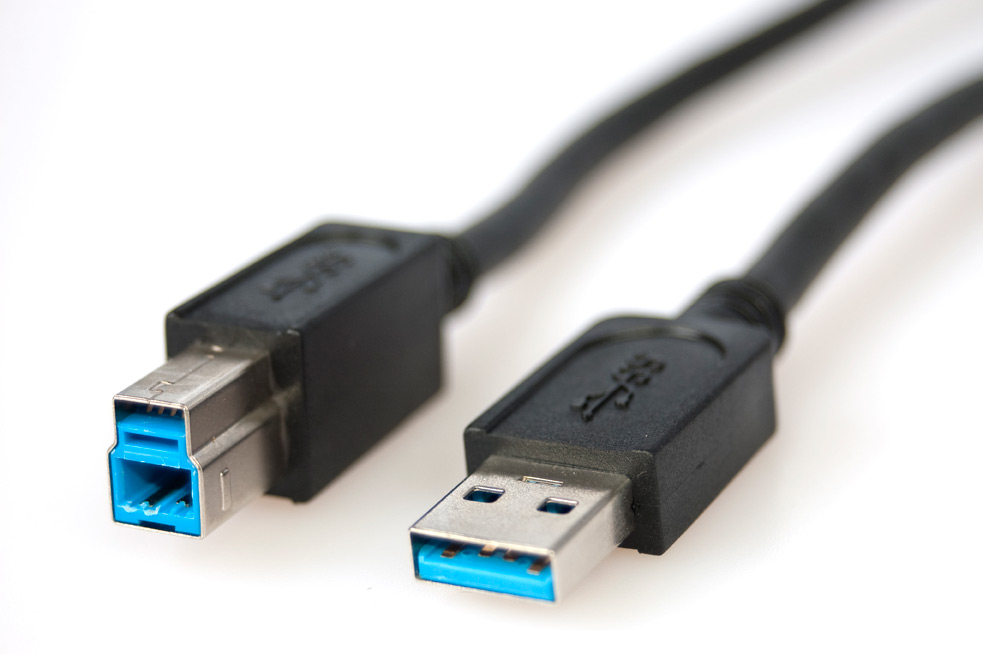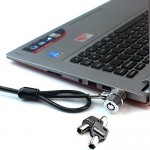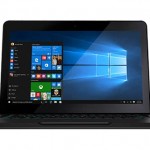
Technology is a lot like rich people.
People for whom the pursuit of more and more money is the only thing that interests them will be forever disappointed: No matter how rich they become, there will always be someone who is richer. They will never have enough, because there never can be enough.
Technology fetishists are much the same. The minute the rabid fan-boy buys the latest model of anything, on his way home he will see an ad for an even newer, better version.
And he will weep bitter tears of frustration.
But there are some advances in technology that really are breathtaking, technologies that represent more than just a new letter tacked on at the end of the iPhone’s model number. Among those are the advances seen with USB 3.0.
Introduced late in 2008, USB 3.0 really does have quite a lot of operational advantages. For one thing, it operates at data transfer rates of up to ten times faster than USB 2.0.
So why not go out and buy all new devices that run USB 3.0? Well, hold on there, sailor. It might not come to that just yet. First, a look at what USB is and what it does.
Universal Serial Bus is an industry standard–not the actual plug or the port–developed in the mid 1990s. It was designed to standardize and simplify the formerly confusing rat’s nest of cables and various means of connecting devices and hardware to computers. It was also meant to simplify connectivity of devices and their attendant software configuration (the ease of “plug and play” which we all enjoy today was not always so simple, my young friends. Trust me.)
The first widely used version was USB 1.1, which came out in 1998. It had a data transfer rate between 1.5 megabits per second (Mbit/s) and 12 Mbit/s. USB 2.0 was released in April 2000, and it brought with it a data transfer rate 40 times higher, up to 480 Mbit/s.
With the advent of the USB 3.0 in 2008, those data transfer rates were bumped up again, in this instance ten times faster than the previous standard, with speeds up to 5 gigabits per second (Gbit/s). What’s more, the USB 3.0 was designed to be backward-compatible with the USB 2.0, allowing users to plug USB 3.0 devices into USB 2.0 slots, although in that case the data transfer rates would of necessity default to the lower USB 2.0 standard.
And in 2014, the USB Implementers Forum–a consortium of developers and engineers dedicated to upgrading and improving the USB standard formed from companies like Intel, Microsoft and Apple–announced the USB 3.1 standard, promising data transfer rates up to 10 Gbit/s.
Here’s a breakdown of the differences between USB 2.0 and USB 3.0.
- Transfer rates – USB 3.0 offers an increased transfer rate of 4.8 Gbit/s, up from the rate of 480 Mbit/s of USB 2.0
- An added physical bus – The number of wires has been doubled, from 4 to 8, which requires more space in both the cables and connectors
- Power consumption – USB 2.0 provides up to 500 milliamperes (mA) while USB 3.0 provides up to 900 mA. So USB 3.0-connected devices will provide more power to charge cell phones and etc. when needed, but they will also conserve power when the device is connected but idle
- More bandwidth – USB 3.0 adds the innovation of two uni-directional paths for communication, one to transmit data and the other to receive. USB 2.0 can only do one or the other at any given moment
- Improved bus utilization – packets called NRDY and ERDY (no, not “nerdy” you guys. Real mature. No, it stands for “not ready” and “endpoint ready”) were added, so a device can asynchronously notify the host of its readiness
So USB 3.0 has been out for a while now. All newer computers come with at least one of the signature blue ports. And if it is so much faster than the USB 2.0, why not replace all your thumb drives and other devices with USB 3.0 compatible ones?
Well, the thing to keep in mind is that, as previously mentioned, USB 3.0 and USB 2.0 refer to the standard, not the device itself. Just because you buy a thumb drive that uses USB 3.0 does not mean that you will see actual data transfers of an unearthly 5 Gbit/s, not by a long shot. There are myriad ways for your data to be dragged down to merely terrestrial speeds.
From category: Buyer's Guide
In reality, this standard just defines the maximum possible transmission rate of data through a USB port. Your experience with data transfer speeds are going to be much like those addendums at the end of car commercials: “Actual mileage may vary.”
For one thing, much like when your drunken cousin Delbert is trying to tell a story at a family reunion, a data transfer is only as fast as the brain transferring it. Whatever thumb drive you are using to transfer data to or from your computer is only as fast as its flash memory.
Secondly, like they say, you get what you pay for. If you spring for a top of the line USB 3.0 thumb drive, it will likely have top rate data transfer speeds. But you can also cheap out on a USB 3.0 device and discover that the speeds are not all that different from a good USB 2.0 thumb drive, despite the increased bandwidth and the aforementioned pair of unidirectional paths for data communication.
But there are plenty of resources out there to check up on the speed of your USB 3.0 device. Before you buy, you can go to Tom’s Hardware and read up on the model you’re interested in. They also have links next to each model to comparable products.
Keep in mind too that this kind of independent testing is really vital to check out, if you want accurate numbers. Manufacturers will almost always list the most exaggerated, high-end number they can associate with the testing done on their product and still keep a straight face.
And if you already have a thumb drive that you want to check out, you can benchmark the device with a free and compact program. At usbflashspeed.com, you download their small program, plug in your thumb drive, and the program will run a series of read and write tests of various sizes. After the tests are done, the files are deleted, and your test information is (anonymously) added to the site’s database. Finally you are given a link to follow where you can view your device’s information in a clear, clean layout.
The site also has a handy dandy list of the current top ten fastest flash drives, listed by both read speed and write speed. They also list the ten most recently tested devices.
So, you’re able to assess the relative data transfer speeds of a number of thumb drives, and you can match them up with prices and see what you’re getting for your hard-earned dollars. The question now becomes, what is worth it for your needs?
If you have the spare cash lying around to buy the very best USB 3.0 thumb drive regardless of the cost, then by all means go for it.
But if you’re a more, shall we say, selective type with your money, then there are a few things to keep in mind.
If you’re just looking for someplace to move some smaller files back and forth, say word documents, PDFs, maybe some songs or photos, then a cheaper USB 3.0 drive, or even a USB 2.0 thumb drive will work fine for you. You won’t find a huge difference in time lag with files of that size using either one.
If, however, you are transferring larger files and planning to use your thumb drive constantly to do so, you might want to invest few extra bucks on something with a better track record on the benchmark sites. You will definitely notice a difference if you buy a cheap USB 3.0 and are trying to use to it to move around files like movies or programs.
Keep in mind too that depending what device you are using, these data transfer speeds aren’t really going to make a difference one way or the other. For things like a USB keyboard or a mouse, a USB 2.0 device and connection will work just fine. USB 3.0 is more about speed in data transfer.
In fact, back in the bronze age, when USB 1.0 was all the rage, manufacturers specified two different speeds depending on what the device was to be used for. There was “low speed” and “full speed,” which were meant to be used for joysticks and other pointing devices, and data transfer respectively.
So there are reasons to use USB 3.0 compatible devices, and there are reasons why they are unnecessary for some things. Over time no doubt USB 2.0 devices and connectors will be phased out but for the foreseeable future both standards will continue to be around.
Now bring on USB 3.1!












